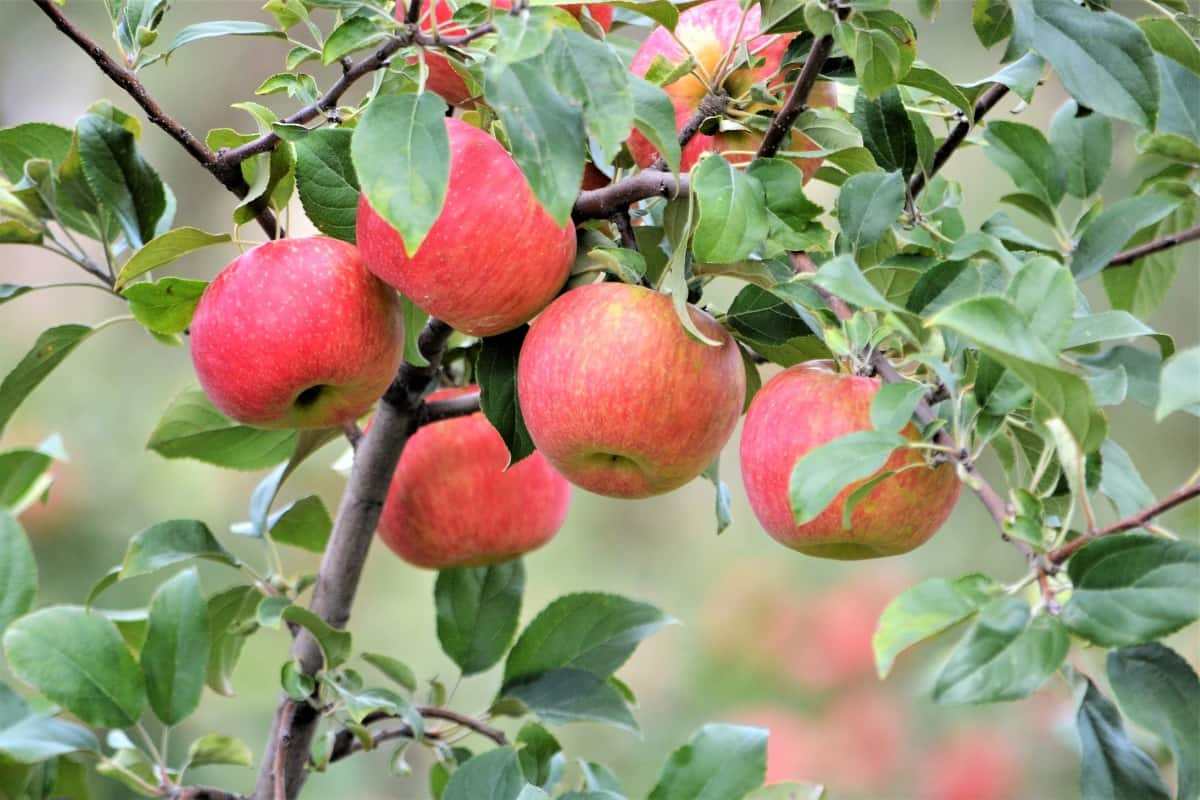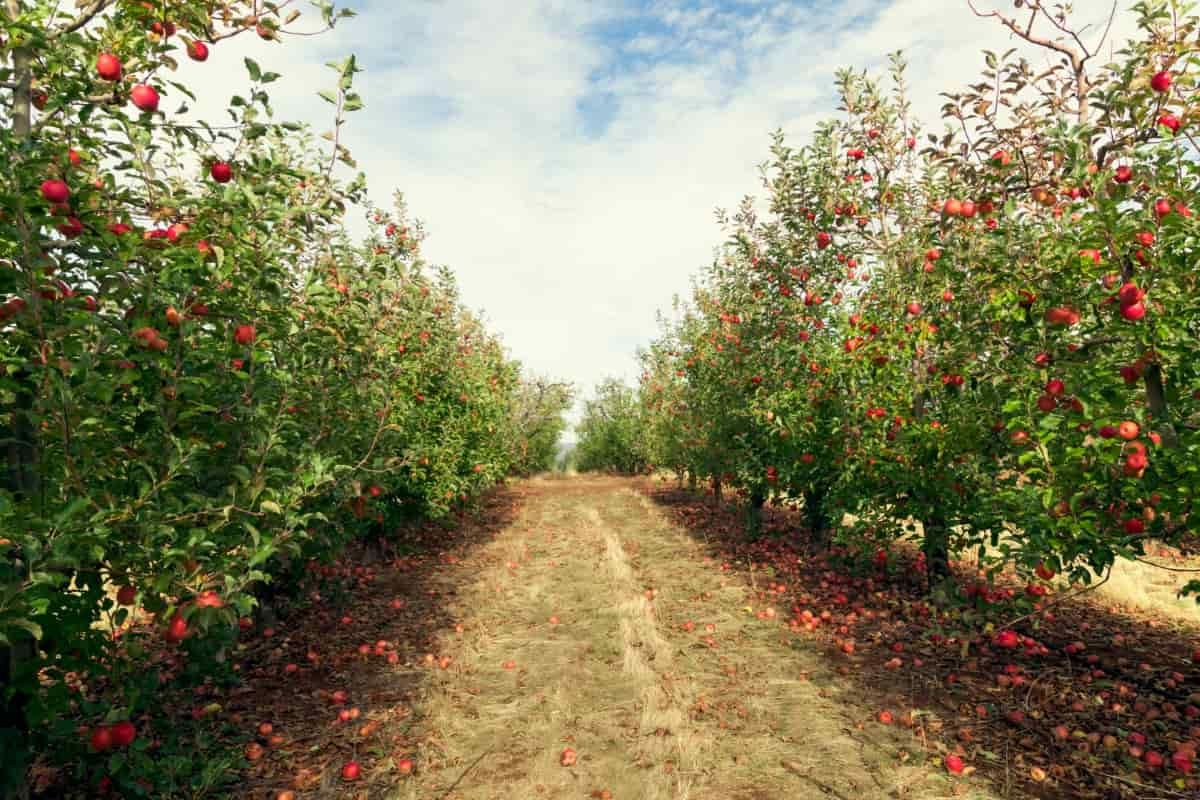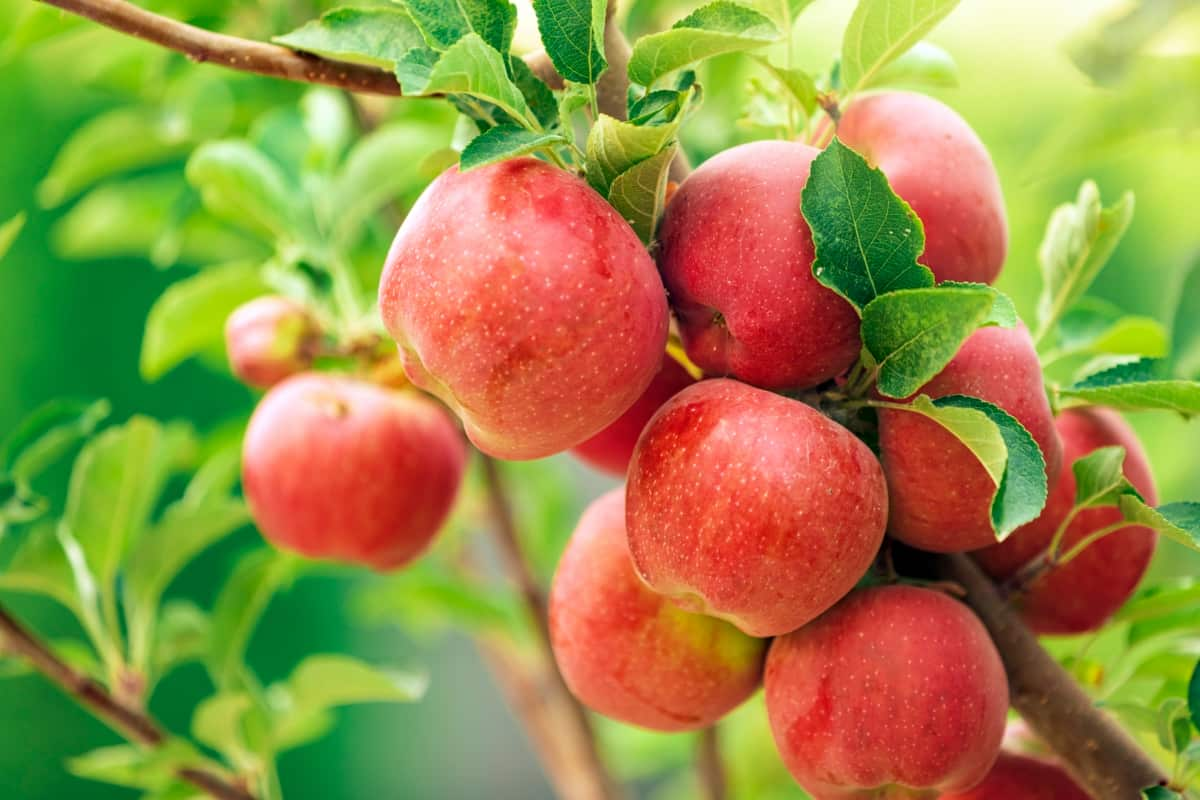Managing fungal diseases in apple trees is crucial for ensuring healthy fruit production. Fungal diseases can cause significant damage to both the foliage and fruit, leading to reduced yields and overall tree health. Employing natural and organic treatments is an environmentally friendly and sustainable approach to control and prevent these diseases. Here’s how to manage fungal diseases on apple trees using natural and organic methods.

Management of Fungal Diseases on Apple Trees
Fungal Diseases in Apple Trees: Causes and Symptoms
Fungal diseases threaten apple trees, impacting fruit quality and tree health. One common culprit is apple scab (Venturia inaequalis), manifesting as olive-green to black lesions on leaves and fruit. Powdery mildew (Podosphaera spp.) is another menace, covering leaves with a powdery white substance, hindering photosynthesis.
Fire blight (Erwinia amylovora) is a bacterial disease often managed with fungicides. Fungi like Nectria spp cause canker diseases. Lead to sunken lesions on branches and trunks, affecting nutrient transport. Moist conditions favor fungal growth, so improving air circulation and practicing proper orchard sanitation can mitigate risks.
How to Identify Fungal Diseases in Apple Trees
Identifying fungal diseases in apple trees involves careful observation of foliage, fruit, and overall tree health. Apple scab is easily recognizable, characterized by olive-green to black lesions on leaves and fruit. Powdery mildew manifests as a powdery white substance on leaves, inhibiting photosynthesis. Fire blight, though bacterial, displays wilting and blackening of branches, resembling fire damage.
Canker diseases result in sunken lesions on branches and trunks. Regularly inspect leaves for discoloration, deformities, or unusual growth patterns. Fungi thrive in moist conditions, so observe environmental factors like humidity and rain patterns. Check for fungal spore-producing structures such as powdery residues or fruiting bodies. Early detection is key, as it allows for timely intervention.
Best Natural and Organic Approaches for Managing Fungal Diseases in Apple Trees
- Organic management of fungal diseases in apple trees focuses on preventive and cultural practices. Begin by selecting disease-resistant apple varieties.
- Enhance air circulation by proper pruning to reduce humidity.
- Apply an organic mulch to suppress weed growth and maintain soil moisture balance. Neem oil, a natural fungicide, can be effective against various fungal pathogens.
- Mixing baking soda and water sprayed on leaves can help control powdery mildew.
- Copper-based fungicides, approved for organic use, combat apple scab.
- Introduce beneficial insects, such as ladybugs, to control pests contributing to disease. Regularly inspect and promptly remove infected plant material.
In case you missed it: Management of Fungal Diseases in Indoor Gardens: How to Control and Prevent with Natural and Organic Treatment

Best Cultural Practices to Prevent Fungal Diseases in Apple Trees
- Implementing effective cultural practices is crucial for preventing fungal diseases in apple trees. Prune trees to enhance air circulation, reducing humidity that fosters fungal growth.
- Maintain proper spacing between trees to minimize leaf wetness. Remove and destroy fallen leaves, as they may harbor fungal spores.
- Apply organic mulch to regulate soil moisture and prevent soil-borne pathogens.
- Choose disease-resistant apple varieties and practice crop rotation to deter disease recurrence.
- Regularly monitor orchards for early signs of infection and promptly address any issues.
- These cultural practices collectively create an unfavorable environment for fungi, promoting apple trees’ overall health and resilience.
Best Disease-Resistant Apple Tree Varieties
- Several disease-resistant apple tree varieties are well-suited for orchards, reducing the need for chemical interventions. Liberty apples exhibit resistance to apple scab, fire blight, and cedar apple rust.
- Enterprise is known for its resilience against apple scab and cedar apple rust.
- Goldrush showcases resistance to scab and powdery mildew.
- Pristine is resistant to apple scab, cedar apple rust, and powdery mildew.
- Redfree is another scab-resistant variety with early ripening.
- Consider planting disease-resistant cultivars like these to minimize the risk of fungal infections, ensuring a healthier and more sustainable apple orchard with reduced reliance on fungicides and pesticides.
Best Pruning Techniques to Minimize Fungal Disease Spread in Apple Trees
- Remove Dead and Diseased Wood: Regularly prune out dead or diseased branches to eliminate potential sources of infection.
- Thinning: Thin out crowded branches to improve airflow, reducing humidity and minimizing conditions conducive to fungal development.
- Open Center Pruning: Opt for an open center pruning style to enhance sunlight penetration, speeding up leaf and fruit drying.
- Prune in Dry Conditions: Conduct pruning during dry periods to prevent the spread of fungal spores through wet pruning wounds.
- Sanitize Tools: Sterilize pruning tools between cuts to avoid inadvertently spreading diseases.
In case you missed it: Management of Fungal Diseases in Balcony Gardens: How to Control and Prevent with Natural and Organic Treatment

Best Soil Management for Fungal Disease Prevention in Apple Orchards
- Well-Drained Soil: Ensure proper drainage to prevent soggy conditions that promote fungal growth.
- Mulching: Apply organic mulch to regulate soil moisture, suppress weeds, and create a protective barrier against soil-borne pathogens.
- Crop Rotation: Practice crop rotation to disrupt the life cycles of soil-dwelling pathogens and reduce disease pressure.
- Balanced Fertilization: Provide balanced nutrients to promote tree health and disease resilience.
- Avoid Overhead Irrigation: Minimize overhead irrigation to reduce leaf wetness, a key factor in fungal proliferation.
- Regular Soil Testing: Conduct regular soil tests to monitor nutrient levels and adjust fertilization practices accordingly.
Best Organic Sprays for Controlling Fungal Diseases in Apple Trees
- Organic sprays offer effective control of fungal diseases in apple trees. Neem oil, made from the neem tree seeds, is a natural fungicide.
- Copper-based fungicides, such as Bordeaux mixture, are approved for organic use against diseases like apple scab.
- Sulfur sprays combat powdery mildew. Serenade, a biological fungicide containing Bacillus subtilis, is effective against various fungal pathogens.
- Also, a mixture of baking soda and water can help control fungal diseases.
- Regularly applying these organic sprays, particularly during the growing season and following rainy periods, provides an environmentally friendly approach to managing fungal issues in apple orchards.
Integrated Pest Management (IPM) Strategies for Fungal Disease Control in Apple Orchards
- Disease-Resistant Varieties: Select apple tree varieties with inherent resistance to common fungal diseases.
- Monitoring: Regularly inspect orchards for early signs of fungal infections, utilizing weather data to predict disease risk.
- Cultural Practices: Optimize orchard layout, practice proper pruning, and maintain good sanitation to reduce disease pressure.
- Biological Control: Introduce beneficial insects and microorganisms that prey on or compete with fungal pathogens.
- Organic Sprays: Use organic fungicides like neem oil, copper-based solutions, and biological fungicides in a targeted manner.
In case you missed it: Prevention and Management of Fire Blight in Apple and Pear Trees

Conclusion
In conclusion, managing fungal diseases in apple trees requires a multifaceted approach. Employing natural and organic treatments, vigilant monitoring, and integrated pest management contribute to sustainable fungal disease control. By combining these methods, orchardists can foster thriving apple trees while reducing reliance on synthetic chemicals, promoting a healthier and more environmentally conscious approach to fruit cultivation.
- Deworming Schedule for Dogs/Puppies: A Beginners Guide
- How to Prevent and Control Parasites in Goats
- Beneficial Insects in Pest Management
- Natural Solutions for Pest Control in Flower Gardens
- Types of Fungicides Used in Agriculture
- Common Issues in the Fruit Development Stage of Pomegranate Farming
- Fruit Development Issues in Papaya: Easy Solutions and Treatment
- Soil-Borne Diseases and How to Protect Your Plants
- Practices to Prevent Disease Spread in the Garden